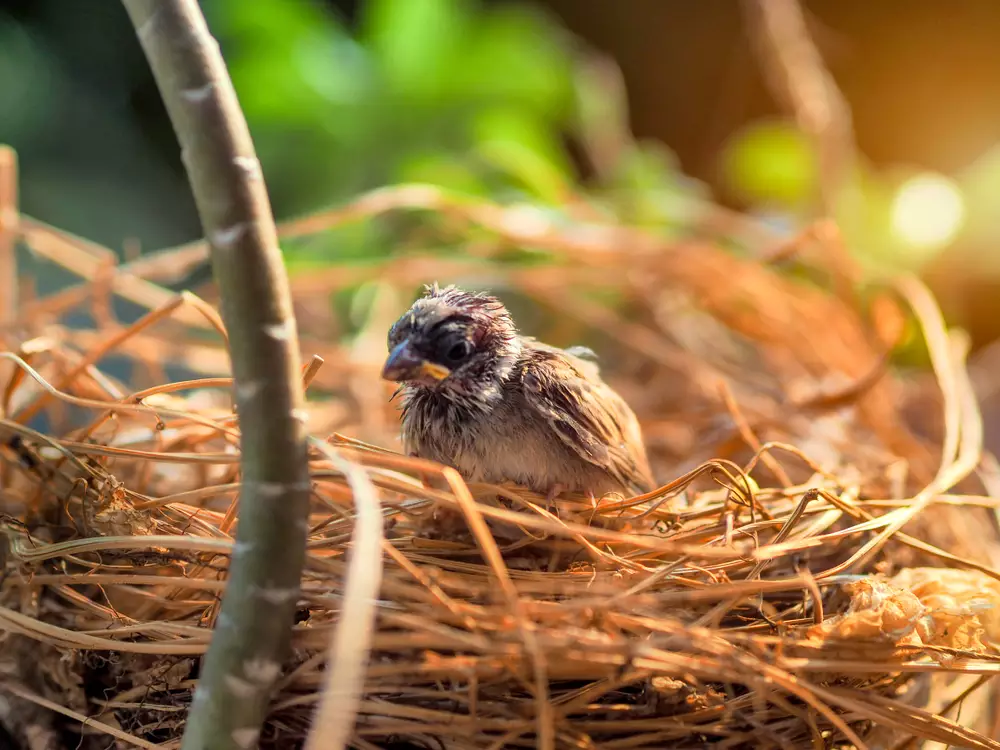A sparrow nest is a small, cup-shaped structure made of twigs, grasses, and other plant material. The outside of the nest is usually lined with feathers or soft down. Sparrows build their nests in trees, bushes, or on ledges in buildings.
Some species of the sparrow will also use man-made structures such as birdhouses.
A Sparrow Nest is a small, cup-shaped nest made of grasses, twigs, and other plant materials. The outside of the nest is usually lined with feathers. Sparrows will build their nests in trees, bushes, or on the ground.
Sparrow nests are typically built close to the ground in areas with dense vegetation. The female sparrow will construct the nest while the male stands guard. Once the nest is complete, the pair will mate and lay eggs.
The eggs are incubated for 12-14 days before they hatch. During this time, both parents take turns sitting on the eggs to keep them warm. Once the chicks hatch, they are altricial, meaning they are born blind and naked.
Both parents feed the chicks until they are old enough to fend for themselves (about 2-3 weeks). If you find a sparrow nest on your property, it’s best to leave it alone.
These birds are protected by state and federal laws, so disturbing their nests can result in hefty fines.

Where Do Sparrows Nest?
Most sparrows will nest in trees, bushes, or on ledges. Some will even build their nests in man-made structures like buildings and bridges. The type of sparrow will determine where it builds its nest.
For example, the house sparrow prefers to nest near people, while the tree sparrow likes to be farther away from human activity.
Sparrows are not fussy about what materials they use to build their nests. They will use anything from grass and twigs to hair and paper.
The only requirement is that the material is soft enough for them to manipulate into a cup shape. The female sparrow does most of the work when it comes to building the nest.
She will start by collecting materials and then fashioning them into a cup shape. Once she has done this, she will line the inside of the nest with softer materials like feathers or down.
Once the female is finished building the nest, she will lay her eggs inside it. She will incubate them for 12-14 days until they hatch.
During this time, she will not leave the nest except to eat or drink.
What Do House Sparrows Nests Look Like?
House sparrows typically build their nests out of grasses, twigs, and other plant materials. They will often line the nest with feathers or other soft materials. The outside of the nest is usually very messy, with bits of vegetation hanging off of it.
The inside of the nest is usually much neater and more well-organized. House sparrows generally build their nests in trees, shrubs, or on ledges.
Should I Remove a House Sparrow Nest?
It is generally not advisable to remove a house sparrow nest. These birds are protected under the Migratory Bird Treaty Act, and it is illegal to disturb or destroy their nests without a permit.
Additionally, these birds are known to be aggressive and may attack people or other animals if their nest is disturbed.
If you must remove the nest, it is best to do so during the non-breeding season (July-February).
What Month Do House Sparrows Lay Eggs?
House sparrows typically lay their eggs in May. This can vary depending on the region, but mainly speaking, this is when they will lay their eggs.
The female house sparrow will usually lay between three and seven eggs per clutch, and she will have two or three clutches per year.
The eggs are white with brown spots and are about 18 mm in diameter.
How Big is a House Sparrow Nest?
A house sparrow nest is usually about 4 inches in diameter and 2.5 inches deep.
The inside of the nest is lined with soft materials such as feathers, hair, or grass. House sparrows typically lay 3-7 eggs per clutch.
Things you need to know about HOUSE SPARROWS!
Conclusion
Sparrows are small, brownish-grey birds with short tails and stout bodies. They build their nests out of leaves, grasses, and other plant materials, which they weave together using their beaks.
The nests are cup-shaped and usually have a lip on the edge to keep the eggs from rolling out. Sparrows typically lay 3-5 eggs per clutch.